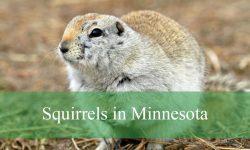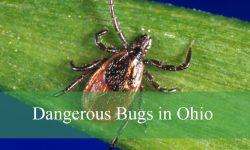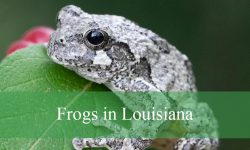In Montana, a fascinating array of weasels and mustelids has adapted to survive in forests, grasslands, and wetland environments. These small carnivores are agile hunters, often elusive, yet play a crucial role in the state’s ecosystems.
The Long-tailed Weasel, Short-tailed Weasel (Ermine), American Mink, and Wolverine each exhibit distinctive behaviors, physical traits, and habitats. From the fast-moving weasels chasing rodents to the powerful, solitary wolverine roaming snowy mountains, Montana’s mustelids demonstrate remarkable survival skills.
This guide provides detailed identification tips, habitat information, and behavioral insights for each species. Wildlife enthusiasts and nature observers alike can learn how to spot and understand these intriguing creatures in the wild.
Different Types of Weasels Found in Montana
Long-tailed Weasel (Neogale frenata)
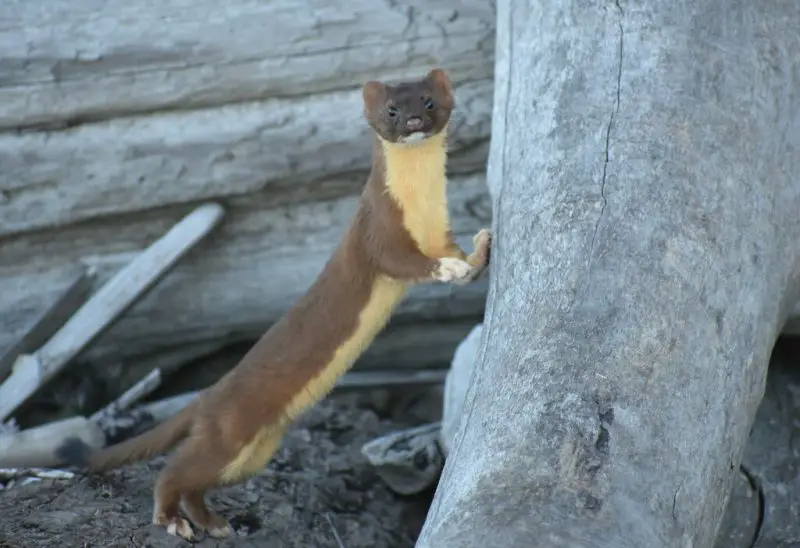
The long-tailed weasel is the most widespread and frequently observed weasel species in Montana. Adults are small, slender, and extremely agile, with body lengths ranging from 7–14 inches and tails adding an additional 4–6 inches. Their summer coat is a rich reddish-brown on the back and creamy white on the underside, providing effective camouflage in grasslands and wooded areas. In northern regions and higher elevations, their winter coat turns completely white, leaving only the black-tipped tail visible—a distinctive feature that aids identification during snowy months. Juveniles are slightly paler and develop the full adult coloration as they mature.
Behaviorally, long-tailed weasels are relentless and energetic predators. They primarily feed on small mammals such as mice, voles, and rabbits, but their diet also includes birds, eggs, and occasionally amphibians. Their hunting style is highly dynamic, combining rapid bursts of speed with precise pounces. They are capable of pursuing prey into burrows and even climbing small trees or swimming short distances to catch fish or escape predators. Their keen senses of smell, sight, and hearing make them formidable hunters despite their small size.
These weasels are solitary creatures with well-defined territories, which they mark using scent glands. Male territories often overlap with several females, but encounters with other adults are generally avoided to minimize conflict. Long-tailed weasels communicate through scent marking and occasional vocalizations such as high-pitched shrieks or hisses when threatened. Their home ranges vary based on habitat quality, with individuals in prey-rich areas maintaining smaller ranges than those in sparsely populated regions.
Long-tailed weasels inhabit a variety of ecosystems in Montana, including forests, open grasslands, riparian corridors, and brushy fields. They show a preference for areas with dense ground cover that offers protection from larger predators and allows stealthy hunting. Their adaptability is enhanced by their climbing and swimming skills, which allow them to exploit diverse food sources. They are often found near streams, ponds, and wetlands, but can also inhabit human-altered landscapes such as farm edges, barns, and abandoned structures where rodent populations are abundant.
Breeding occurs in the spring, but females exhibit delayed implantation, with embryos remaining dormant until the following year, resulting in kits born in early spring. Litters typically contain 4–8 kits, which are weaned at around four weeks and become independent within two to three months. Long-tailed weasels are active throughout the year and primarily nocturnal, though in winter and colder months, they may be seen during the day while foraging. With an exceptionally high metabolism, they must hunt almost constantly to maintain energy, making them some of the most efficient small predators in Montana’s ecosystems.
Short-tailed Weasel / Ermine (Mustela erminea)
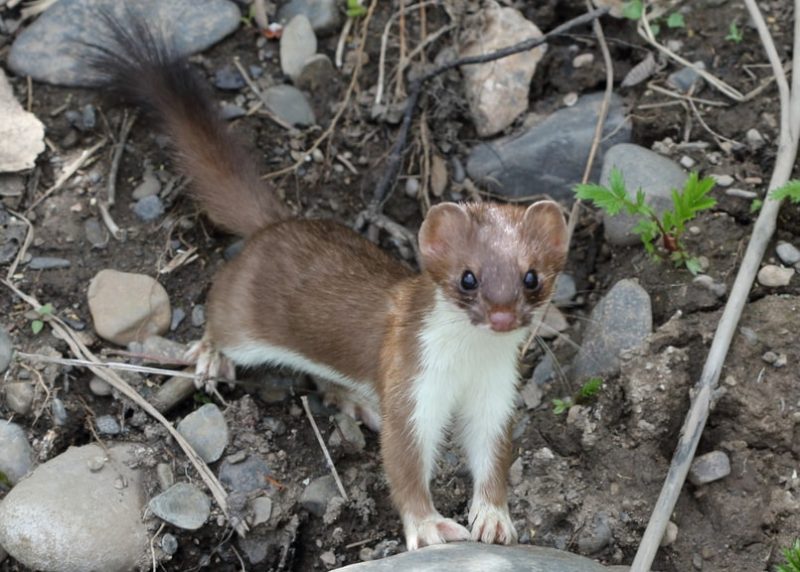
The short-tailed weasel, also called the ermine or stoat, is smaller and more compact than the long-tailed weasel, measuring 6–10 inches in body length with a tail of 1.5–4 inches tipped in black. Its summer coat is rich brown on the back and white underneath, blending well with grasslands and forest floors. In northern Montana and higher elevations, the winter coat turns entirely white, leaving only the black tail tip as a distinguishing feature. Juveniles are paler and gradually acquire the adult coloration within their first few months.
Short-tailed weasels are formidable hunters, feeding mainly on mice, voles, shrews, and small birds. Despite their small size, they can take down prey larger than themselves using a combination of speed, agility, and sharp teeth. They are capable of following prey into burrows and tunnels, and their slender bodies allow them to hunt effectively in dense vegetation. Their hunting behavior is highly energetic and precise, relying on acute senses of sight, smell, and hearing to locate prey.
These weasels are solitary and territorial, with individuals marking their range using scent glands. Male territories often overlap several females, but direct encounters with other adults are rare due to their aggressive nature. Short-tailed weasels communicate primarily through scent marking, supplemented with occasional shrieks or hissing sounds when threatened. Home ranges vary depending on habitat and prey abundance, with weasels in prey-rich areas maintaining smaller territories.
Ermines inhabit forests, shrublands, tundra edges, and open fields, often near streams or wetlands. They are frequently observed hunting along field edges and riparian zones, where rodents are plentiful. Their small size and flexibility allow them to enter burrows, crevices, and dense vegetation that other predators cannot access. This adaptability enables them to thrive in a variety of Montana habitats, from lowland woodlands to mountainous regions.
Breeding occurs in late spring, but like other mustelids, females exhibit delayed implantation, causing embryos to remain dormant until early the following year. Litters usually consist of 4–12 kits, which grow rapidly and disperse after a few months. Short-tailed weasels are primarily nocturnal but can be active during daylight, especially in winter when hunting is more challenging. Their extremely high metabolism requires almost constant hunting, making them persistent and highly effective predators in Montana’s ecosystems.
American Mink (Neogale vison)
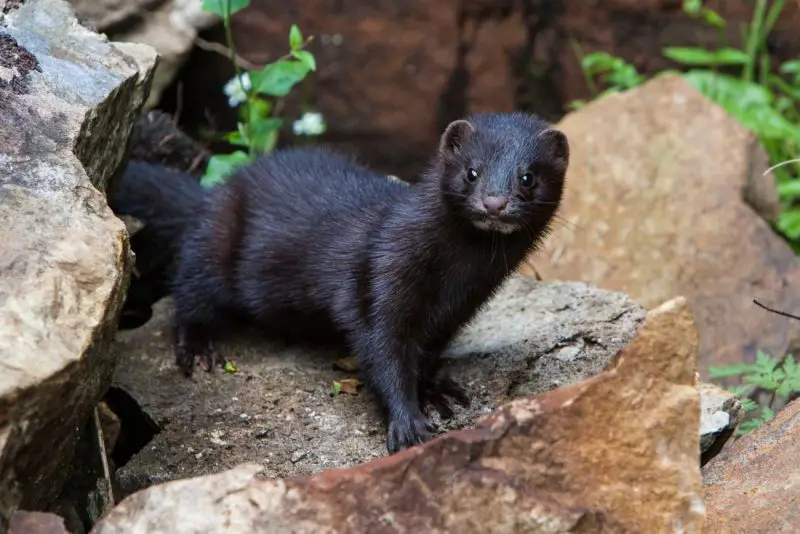
Although not a true weasel, the American mink belongs to the same Mustelidae family and shares many behavioral and ecological traits with weasels. Adults typically measure 14–18 inches in body length, with an additional 5–7 inches of tail. Their thick, glossy fur is dark brown, sometimes interspersed with white patches on the chin, chest, and throat, which can vary between individuals. This dense fur provides insulation in cold aquatic habitats and historically made minks highly prized in the fur trade. Juveniles are lighter and gain the full adult coat by their first year.
Minks are semi-aquatic predators with a versatile diet, feeding on fish, frogs, small mammals, birds, and occasionally crustaceans. They are highly skilled hunters, capable of diving, swimming, and climbing to catch prey. Their hunting behavior is both stealthy and aggressive, with sharp teeth and quick reflexes allowing them to overpower prey larger than themselves. This adaptability makes them important regulators of small animal populations in Montana’s wetland ecosystems.
These carnivores are solitary and territorial, with individuals maintaining exclusive home ranges along rivers, streams, lakeshores, and marshes. Minks often construct dens along water edges or occupy abandoned muskrat burrows, hollow logs, or rocky crevices. Their streamlined bodies and partially webbed feet make them excellent swimmers, allowing them to chase fish underwater and escape larger predators. This semi-aquatic lifestyle sets them apart from other mustelids in Montana.
Breeding occurs in early spring, but like other mustelids, females exhibit delayed implantation, resulting in kits being born in late spring. Litters typically contain 4–6 kits, which remain with the mother for several months before dispersing in late summer. The mother raises the young in dens, providing protection and food while they learn hunting skills critical for survival.
American minks are primarily nocturnal but can be active at dawn and dusk, particularly during the warmer months. Their high metabolism and energetic nature require almost constant hunting, which contributes to their effectiveness as predators in wetland areas. By controlling rodent and small bird populations, minks play a crucial ecological role in maintaining the balance of Montana’s freshwater and riparian habitats.
Wolverine (Gulo gulo)
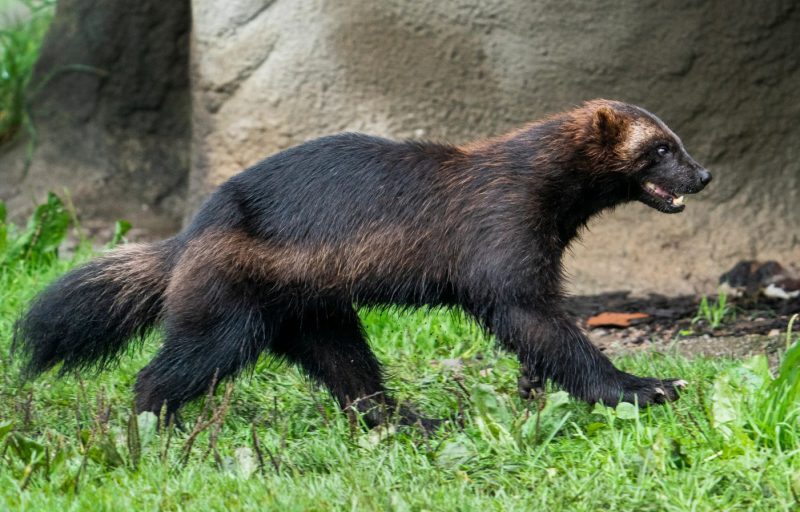
The wolverine is the largest member of the Mustelidae family in Montana and is considerably larger than other weasels or mustelids in the region. Adults weigh between 20–55 pounds, with body lengths ranging from 26–34 inches and tails adding another 7–10 inches. Their thick, dark brown fur is accented with lighter stripes running along the sides and back, providing camouflage in forested and snowy habitats. Juveniles are slightly lighter in color and develop the adult markings as they mature. Wolverines’ muscular bodies, broad paws, and dense fur make them highly adapted to the harsh conditions of Montana’s mountainous and subalpine regions.
Wolverines are solitary, wide-ranging predators and scavengers. Their diet includes mammals such as deer and rodents, birds, carrion, and occasionally berries. Known for their remarkable strength and tenacity, they can take down prey much larger than themselves, often traveling great distances in search of food. Wolverines rely on a combination of stamina, powerful jaws, and sharp claws to hunt or scavenge effectively, making them apex predators in their habitat despite their relatively small population.
These mustelids inhabit remote, mountainous, and forested areas, often preferring snow-covered regions far from human activity. Wolverines maintain enormous home ranges, sometimes exceeding hundreds of square miles, depending on food availability. They are highly territorial, using scent markings and scratch marks to communicate their presence and avoid encounters with other wolverines. Their preference for isolated, rugged terrain makes them elusive and rarely observed by humans.
Breeding involves delayed implantation, a common trait among mustelids. Mating occurs in summer, but embryos do not implant until early winter, leading to kits being born in dens during late winter or early spring. Litters typically contain 2–3 kits, which remain with their mother for several months before dispersing. The mother provides extensive care, teaching hunting and survival skills necessary for thriving in Montana’s challenging environments.
Wolverines are primarily nocturnal but may also be active during dawn and dusk, particularly in winter. Their powerful bodies, sharp claws, and strong digging and climbing abilities allow them to navigate snow, rocky terrain, and forested landscapes with ease. Adapted to extreme cold and snow, wolverines play a critical ecological role as both predators and scavengers, helping maintain the balance of Montana’s high-elevation ecosystems.
FAQs About Weasels in Montana
What species of weasels are found in Montana?
Montana is home to several mustelids, including the Long-tailed Weasel (Neogale frenata), Short-tailed Weasel or Ermine (Mustela erminea), American Mink (Neogale vison), and Wolverine (Gulo gulo). While minks and wolverines are larger and semi-aquatic or wide-ranging, all these species share predatory behaviors and belong to the Mustelidae family.
How can I identify a Long-tailed Weasel?
Long-tailed Weasels are small and slender, with reddish-brown fur on the back and creamy white underparts in summer. In winter, northern populations turn completely white, except for a black-tipped tail. They measure 7–14 inches in body length, with tails adding 4–6 inches, and are highly agile predators often seen near woodlands, grasslands, and riparian areas.
What is the difference between a Short-tailed Weasel and a Long-tailed Weasel?
The Short-tailed Weasel (Ermine) is smaller, measuring 6–10 inches with a short black-tipped tail of 1.5–4 inches. They have brown summer coats and white winter coats, like long-tailed weasels, but their shorter tails and more compact body shape help distinguish them. Behaviorally, both are energetic hunters, but ermines are often found in denser forests and tundra edges.
Where are American Minks most commonly found in Montana?
American Minks are semi-aquatic and prefer riverbanks, wetlands, lakeshores, and streams. They are solitary and build dens along water edges or use abandoned muskrat burrows. Their excellent swimming abilities make them effective hunters of fish, amphibians, and small mammals.
How large are Wolverines, and are they dangerous to humans?
Wolverines are the largest mustelid in Montana, weighing 20–55 pounds with body lengths of 26–34 inches. They are solitary and wide-ranging predators but are generally not dangerous to humans due to their remote habitats. They are incredibly strong and can take down large prey, making them apex predators in mountainous ecosystems.
When is the best time to see weasels in Montana?
Weasels are primarily nocturnal but may be observed during the day, especially in winter when they forage more actively. Early morning or late evening along forest edges, grasslands, riparian areas, and wetlands offers the best chance to spot them. Wolverines are most often seen in remote, mountainous areas.
What do weasels eat in Montana?
Their diet varies by species. Long-tailed and Short-tailed Weasels mainly eat rodents, rabbits, and birds. American Minks feed on fish, frogs, small mammals, and birds, while Wolverines are opportunistic, consuming mammals, birds, carrion, and even berries. All have high metabolisms and need frequent meals to survive.
How do weasels survive Montana winters?
Weasels adapt to Montana’s cold winters by changing their coat color to white for camouflage in snow, maintaining high metabolic rates to generate heat, and utilizing burrows or dens for protection. Their hunting activity remains nearly constant throughout the year, allowing them to survive harsh winter conditions.




